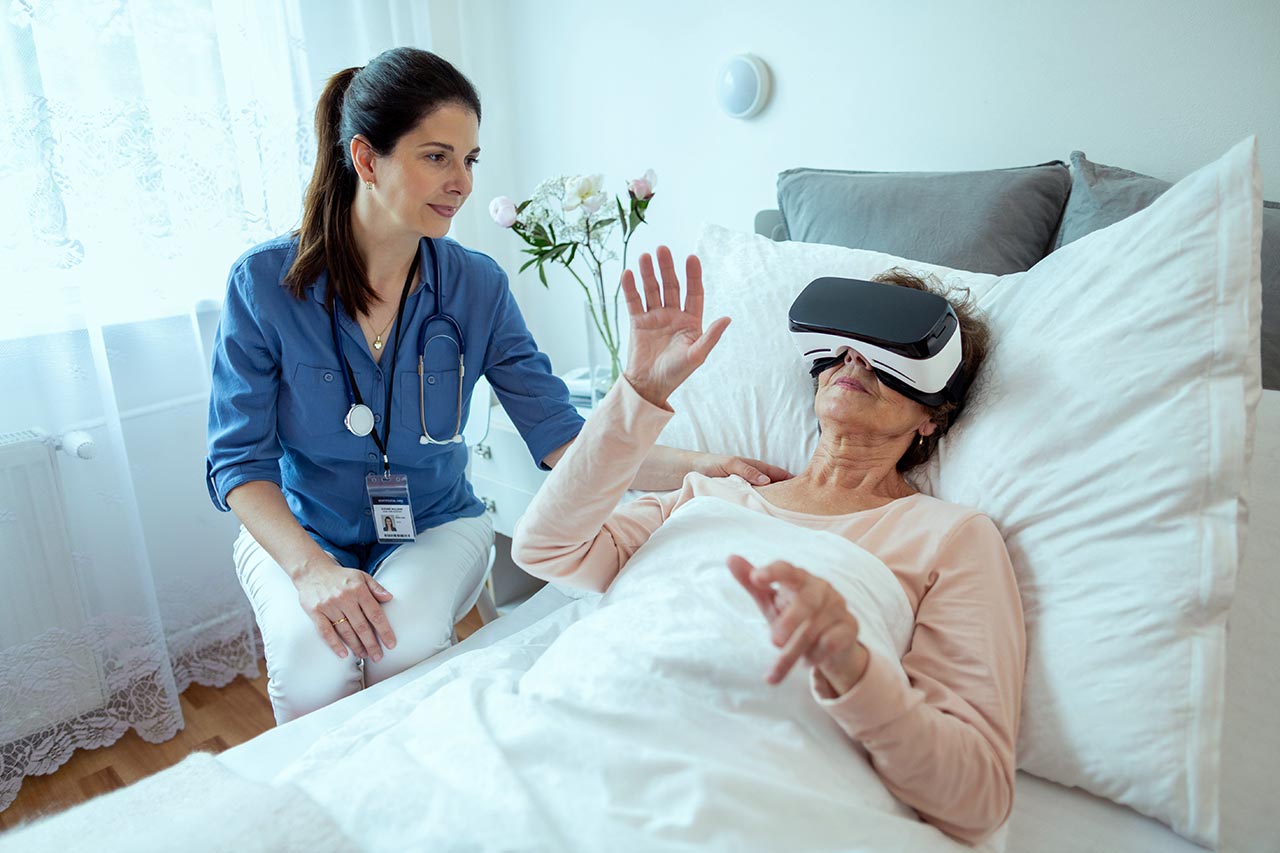Myth #1: All digital therapeutics (DTx) are pretty much alike
As the DTx evolve, the waterline between them and numerous wellness apps existing on the market becomes clearer and clearer. Essentially, the distinction lies in the existence of clinical evidence for DTx. However, it would be too simplistic to think that digital therapeutics are homogeneous. In fact, the DTx market is being more and more polarized between the solutions aimed at patient management optimization, sometimes referred to as digital care, and those which yield tangible physiological and/or clinical effects and can be thus qualified as pure DTx. Each of these groups has its specificities and opportunities.
On one end of this spectrum, numerous solutions destined for the prevention and management of chronic diseases, such as diabetes and cardiovascular diseases, seek to demonstrate improvement in the quality of life or reduction of associated healthcare costs.
The clinical validation of this DTx type can be considered rather simple (especially as compared to that of a drug) and is usually based on one-two straightforward endpoints. For instance, Omada Health, a US-based developer of digital lifestyle intervention programs for the prevention and treatment of chronic conditions, emphasizes the peer-reviewed studies demonstrating how their digital behavioral counselling program for weight loss reduces the risk of diabetes, stroke, and heart disease.
Quite often the developers of these solutions aim to secure reimbursement from private payers. Thus, Livongo, another US developer of a digital platform for patients with chronic conditions, has partnerships with 4 major National Health Plans and Innovative Health Systems.
It is important to mention that the apparent simplicity of this market is gradually turning it into a red ocean with a fierce competition and very high customer acquisition costs, sometimes close to several hundred dollars.
On the other hand, pure DTx enter clinical trials to prove clinical relevance, necessary to obtain the approval from the healthcare regulatory authorities and to claim reimbursement.
These clinical trials tend to be closer by nature to the traditional ones for drugs and aim at very specific endpoints. Thus, Oncomfort, a Belgian developer of a virtual-reality-based hypnosis solution for pain and anxiety relief, is sponsoring a clinical study to compare the effect of painful stimuli with and without their solution by following physiological and neurophysiological changes registered by sensors and captors. Another recent successful example is Somryst, a prescription digital therapeutic for patients with chronic insomnia developed by Pear Therapeutics and authorized by the FDA under a traditional pathway for medical devices in 2020. Somryst tailored neurobehavioral interventions were clinically proved to lead to improvements in insomnia severity, as well as in sleep onset latency and wake after sleep onset.
The downside of aiming for a solid proof of clinical value and for reimbursement is the necessity for the DTx players to follow cumbersome procedures, engage in high-level scientific and medical discussions on the choice of endpoints, negotiate with the regulators and payers, etc.
Learn more about the potential and development of DTx in the Healthcare industry >
Myth #2: All DTx are stand-alone solutions competing with drugs
DTx might appear to be positioned as an alternative to conventional pharmacological solutions. However, with the exception of rare examples like Oncomfort, the digital therapeutics are not designed to replace pharmacological treatments but rather to act prior to them (e.g. for disease prevention) or to complement and enhance them. Thus, a variety of DTx solutions are meant to improve patients’ adherence to treatment thanks to digital interventions. As for the DTx aimed at improving specific patient endpoints, they are also often used in combination with drugs. For instance, Akili, another US-based prescription digital medicine company, is sponsoring a clinical study to demonstrate the impact of their software in combination with stimulant medication in patients with attention deficit hyperactivity disorder by following the change of the overall impairment according to the Impairment Rating Scale.
In this light, one of the business model dilemmas for DTx is the choice of whether to bundle them with specific drugs thus offering a comprehensive patient-centric solution, or to market them as a stand-alone product capable of improving patients outcomes in combination with various pharmacological treatments.
Myth #3: DTx are a playground for pure tech companies
Indeed, DTx creation requires prominent digital skills and the agility necessary to develop user-friendly solutions in an iterative manner, characteristics more frequent in digital startups than in classical pharmaceutical companies. However, DTx-specialized companies frequently collaborate with the pharma players to benefit from their research expertise, extensive experience in regulatory approval and reimbursement procedures, understanding of payers and of clinical practices.
The benefits of such symbiosis should be frequently reevaluated to decide on whether to continue the collaboration, as illustrates with the partnership between Novartis and Pear Therapeutics, a prescription DTx developer mentioned earlier. Since 2018, the two companies have been co-developing DTx solutions for the treatment of schizophrenia and multiple sclerosis. While this collaboration appears to be still ongoing, in the end of 2019, Sandoz (Novartis company) stepped out of the planned co-promotion of reSET, a prescription DTx for substance use disorders treatment.
While DTx developers and pharmaceutical companies benefit from a complementary set of competencies, they can also find synergies by building a more connected patients data space. A good example is the partnership between Roche and mySugr, one of the world’s most popular digital diabetes platforms. Roche’s connected glucometer Accu-Chek is accompanied by an FDA-cleared diabetes management app Accu-Check Connect which allows patients to follow their blood glucose level and which is synced with the comprehensive mySugr diabetes management platform.
To conclude, the question for pharma companies has long changed from “whether or not to engage in digital therapeutics” to “how to succeed in the environment where DTx will continue becoming an integrated part of treatment schemes”. In this context, the pharma companies will need to decipher the most relevant value proposition for the DTx to be developed, choose how to integrate them in the existing drug portfolio (in combination or stand-alone), and select a right partner to proceed.
About the authors
Benjamin, Great Explorer Digital Health in Alcimed’s Healthcare team in France
Luc, Partner and Business Unit Director in Alcimed’s Healthcare team in France
Amélie, Head of the Data activity in Alcimed’s Healthcare team in France



